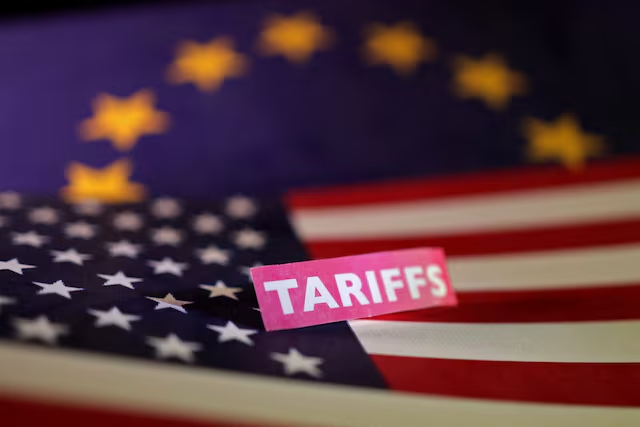Master U.S. Tariffs: Essential Cheat Sheet for Upcoming Rate Changes
As the landscape of international trade continues to evolve, U.S. tariffs remain a critical factor influencing economic relationships between the United States and its global trade partners. With recent announcements from President Trump signaling that delayed tariff increases will take effect on August 7, businesses and consumers alike are bracing for the impact of these changes. This article serves as an essential cheat sheet for understanding the upcoming rate changes, their implications, and how they affect various stakeholders.

Recognizing the complexities of U.S. tariffs is crucial for anyone involved in trade, whether a business owner, a consumer, or an investor. This article will break down the key components of the current tariff landscape, provide updates on the rate changes, and offer insights into what you need to know to navigate these changes effectively.
Understanding U.S. Tariffs
Tariffs are government-imposed taxes on imported goods, designed to protect domestic industries from foreign competition and to generate revenue. In recent years, the U.S. has implemented various tariffs on a wide range of products, affecting numerous trade partners globally. Understanding the rationale behind these tariffs and their implications is essential for businesses and consumers.
The Purpose of Tariffs
Tariffs serve multiple purposes, including:
- Protecting Domestic Industries: Tariffs help level the playing field for U.S. manufacturers by making imported goods more expensive.
- Generating Revenue: Tariffs provide a source of income for the U.S. government.
- Influencing Trade Policies: Tariffs can be used as a tool to negotiate better trade agreements with other nations.
Upcoming Rate Changes: What to Expect
On August 7, new tariffs will take effect, impacting dozens of trade partners. President Trump’s declaration that there will be no further extensions to the tariff deadlines has heightened urgency for businesses to prepare for the changes. The new rates will affect various sectors, including technology, agriculture, and manufacturing.
Products Affected by the Tariff Increases
The upcoming tariff rates will apply to a wide range of products, including:
- Electronics, such as smartphones and laptops
- Consumer goods, including clothing and footwear
- Machinery and equipment used in manufacturing
- Agricultural products, such as soybeans and other crops
The Impact on Trade Partners
Countries impacted by these tariffs include major players like China, the European Union, and Canada. The imposition of tariffs can lead to retaliatory measures by these countries, further complicating international trade relationships.
Economic Implications of Tariff Increases
The economic implications of tariff increases can be profound, affecting everything from consumer prices to international relations. Businesses must be prepared to adjust their strategies in response to these changes.
Effects on Prices
One of the most immediate effects of tariff increases is the potential rise in consumer prices. As businesses face higher costs for imported goods, these costs are often passed on to consumers.
Impact on Supply Chains
Tariffs can disrupt established supply chains, as businesses may need to seek alternative sources for their products. This can lead to increased operational costs and longer lead times.
Strategies for Businesses to Adapt
As businesses brace for the impact of the upcoming tariff changes, it is vital to develop strategies that can mitigate potential negative effects.
Conducting a Tariff Impact Assessment
Businesses should start by evaluating their importation processes and identifying products that will be affected by the new tariffs. This assessment can help in making informed decisions about pricing and sourcing.
Exploring Alternative Suppliers
In light of the tariff increases, businesses may consider sourcing products from countries not affected by the tariffs. This can help reduce costs and maintain competitive pricing.
Adjusting Pricing Strategies
Companies may need to adjust their pricing strategies to account for increased costs. Transparent communication with customers about why prices are changing can help maintain trust and loyalty.
Frequently Asked Questions (FAQ)
1. What are U.S. tariffs?
U.S. tariffs are taxes imposed by the U.S. government on imported goods, aimed at protecting domestic industries and generating revenue.
2. When will the new tariffs take effect?
The new tariffs will take effect on August 7, as announced by President Trump.
3. Which products will be affected by the tariff increases?
The tariff increases will affect a range of products, including electronics, consumer goods, machinery, and agricultural products.
4. How will these tariffs impact consumers?
Consumers may experience higher prices on various goods as businesses adjust their pricing strategies to accommodate increased costs from tariffs.
5. What can businesses do to prepare for the tariff changes?
Businesses should conduct a tariff impact assessment, explore alternative suppliers, and adjust pricing strategies to mitigate the effects of the upcoming tariff increases.
Conclusion
As U.S. tariffs continue to evolve, understanding the implications of upcoming rate changes is essential for businesses and consumers. With the new tariffs set to take effect on August 7, stakeholders must prepare for the economic and operational challenges that lie ahead. By staying informed and adapting strategies accordingly, businesses can navigate this complex landscape and continue to thrive in an increasingly competitive global market.
📰 Original Source
Este artigo foi baseado em informações de: https://www.nerdwallet.com/article/finance/tariff-cheat-sheet


